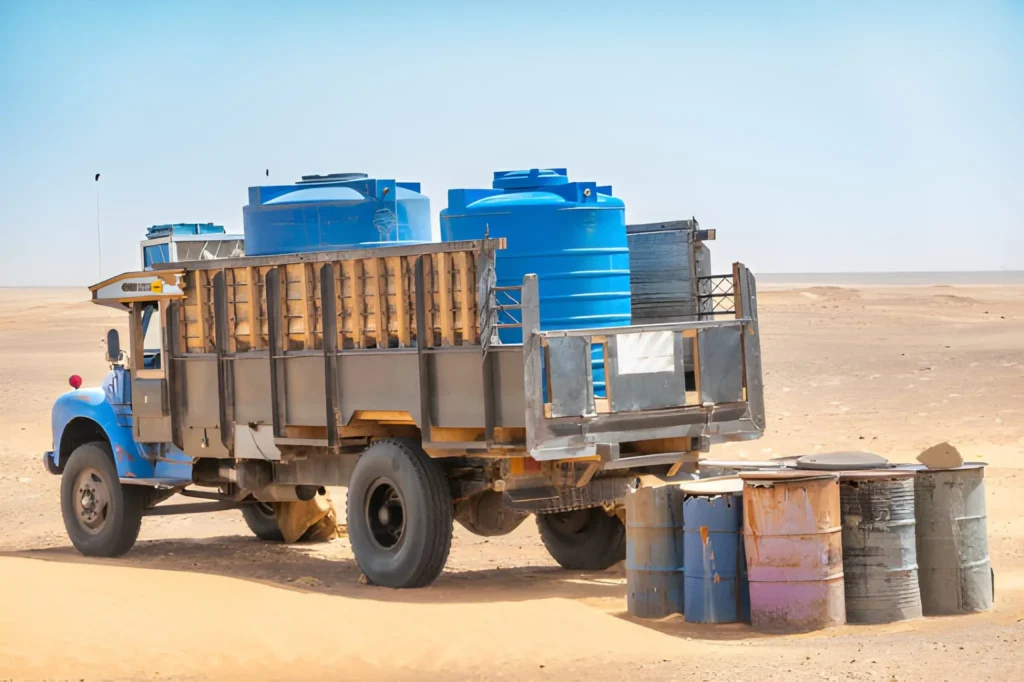When you’re hauling water through deserts, mining sites, or remote farmland, your equipment needs to handle way more than just holding liquid. A durable water tank for transport becomes your lifeline in these scenarios, dealing with constant vibration, temperature swings, UV exposure, and rough terrain that would tear apart regular storage solutions. These aren’t your garden-variety water containers. We’re talking about engineered systems built specifically for punishment, designed with materials and construction methods that acknowledge the reality of off-road conditions where failure isn’t just inconvenient—it can shut down entire operations.
What Makes Transport Tanks Different From Static Storage
Regular water tanks sit in one spot. Transport tanks get thrown around on truck beds, bounced over corrugated roads, and subjected to dynamic stress loads that static tanks never see. The mounting system matters as much as the tank itself. You need secure tie-down points that distribute force without creating stress concentrations. Tanks designed for transport typically use rotomolded polyethylene or UV-stabilized polymers that can flex slightly without cracking. Some industrial versions use baffled interiors to prevent water surge—when 1,000 liters sloshes forward during braking, that momentum can actually shift your vehicle’s center of gravity enough to cause handling problems.
The wall thickness on proper transport tanks runs thicker than stationary models, sometimes 10-15mm versus the standard 5-8mm you’d find on a basic storage tank. This isn’t just about impact resistance. Thicker walls handle the fatigue cycling that comes from repeated loading and unloading, where the tank walls flex thousands of times over the tank’s service life.
Material Science Behind Rugged Conditions
UV degradation is real and it’s brutal. Polyethylene exposed to Australian sun without proper stabilizers can become brittle within 18-24 months. Quality transport tanks incorporate carbon black or specialized UV inhibitors directly into the polymer matrix during manufacturing. This isn’t a coating that can wear off—it’s baked into the material itself.
Temperature cycling presents another challenge. A tank might start the day at 5°C, heat to 45°C by afternoon, then drop again overnight. Most polymers expand and contract with temperature, and this cycling can lead to fitting failures where pipes connect to the tank. Better designs use flexible connectors or allow for thermal expansion in the mounting system.
Real-World Performance Factors
Fitting quality separates cheap tanks from reliable ones. Brass fittings corrode less than steel, but they’re heavier and more expensive. The threads need proper sealing—either with quality O-rings or tapered pipe threads that create metal-to-metal seals. Bulkhead fittings that pass through the tank wall need adequate reinforcement to prevent stress cracking around the penetration.
Venting is something people overlook until they have problems. As water sloshes and temperature changes, air pressure inside the tank fluctuates. Without proper venting, you get either vacuum conditions that slow discharge or pressure buildup that can force water past seals. A simple breather cap with a hydrophobic membrane keeps pressure equalized while preventing dust and water ingress.
Drain positioning affects usability more than you’d think. Bottom drains empty completely but they’re vulnerable to damage from ground strikes. Side drains mounted 50-100mm from the bottom leave some water behind but protect the fitting. Some operations run both configurations—a protected side drain for regular use and a bottom drain they only open when they need complete evacuation.
Also Read-Staying Ahead in Dental Practice: Continuous Education, Tech Trends, and Patient Care







